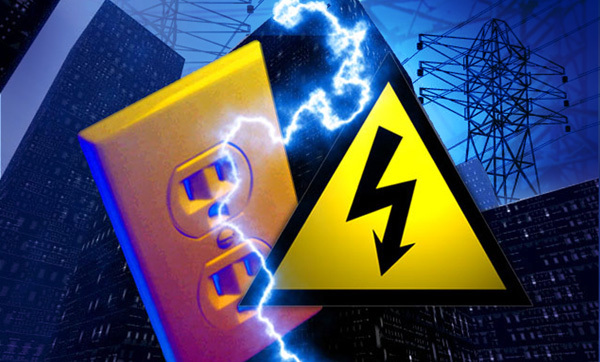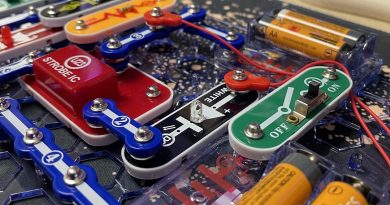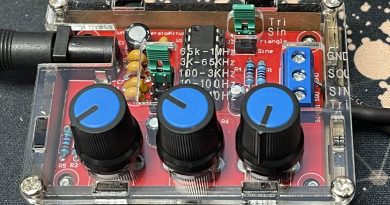Emergency Stepper Motor Cell Phone Charger
Emergency Cell Phone Charger Using Stepper Motor
A stepper motor may be used to recharge batteries in your cell phone to allow a short emergency call should you find yourself in a remote area with a dead cell phone. This short guide will walk you through building your own DIY Emergency Cell Phone Charger.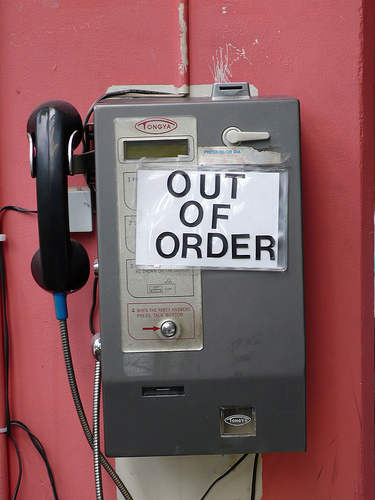
Although any DC motor would theoretically work in this application, stepper motors are well suited for use as a generator due to the small size and powerful magnets used.
The circuit consists of the stepper motor outfitted with a crank handle to allow the user to rotate the shaft with a minimal amount of effort. The output alternating current produced is then rectified by a bridge rectifier and large electrolytic capacitors are used to store the energy produced.
An additional concern is ensuring that the voltage is limited to 5 volts so as not to damage the cell phones lithium ion battery. This was accomplished with a low drop out 5 volt linear voltage regulator.
Various motors were tested to determine the optimum size for this application. We found the 15.0 kg-cm 6 Wire NEMA 23 Step Motor to be ideal for this project.
Although the largest size motor would produce he maximum amount of energy, the system could get unwieldy and may require an excessive amount of effort to turn the crank.
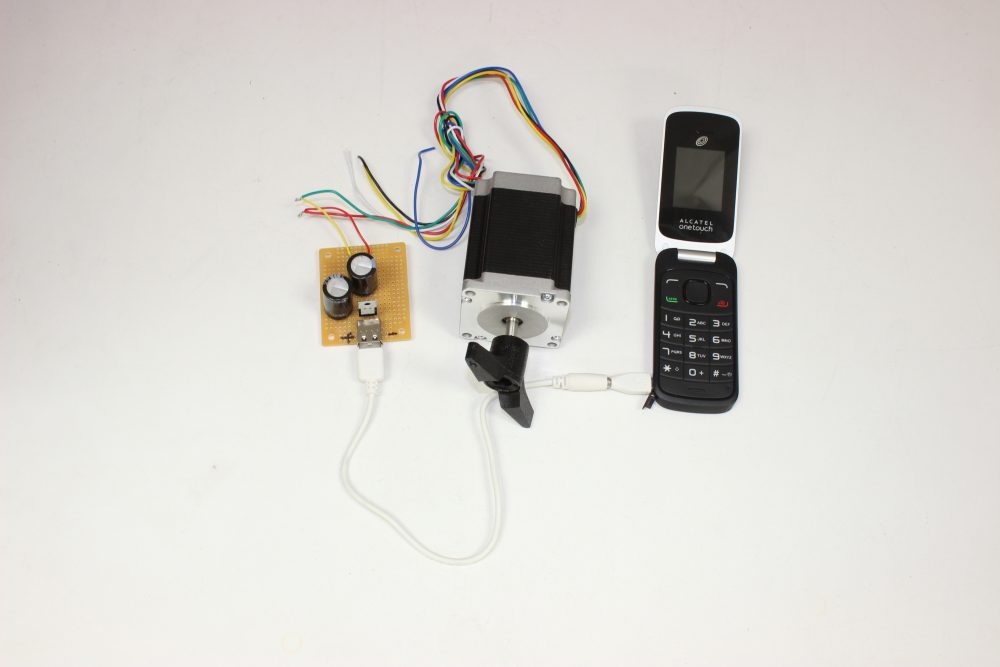
The schematic diagram of the cell phone charger can be seen below. 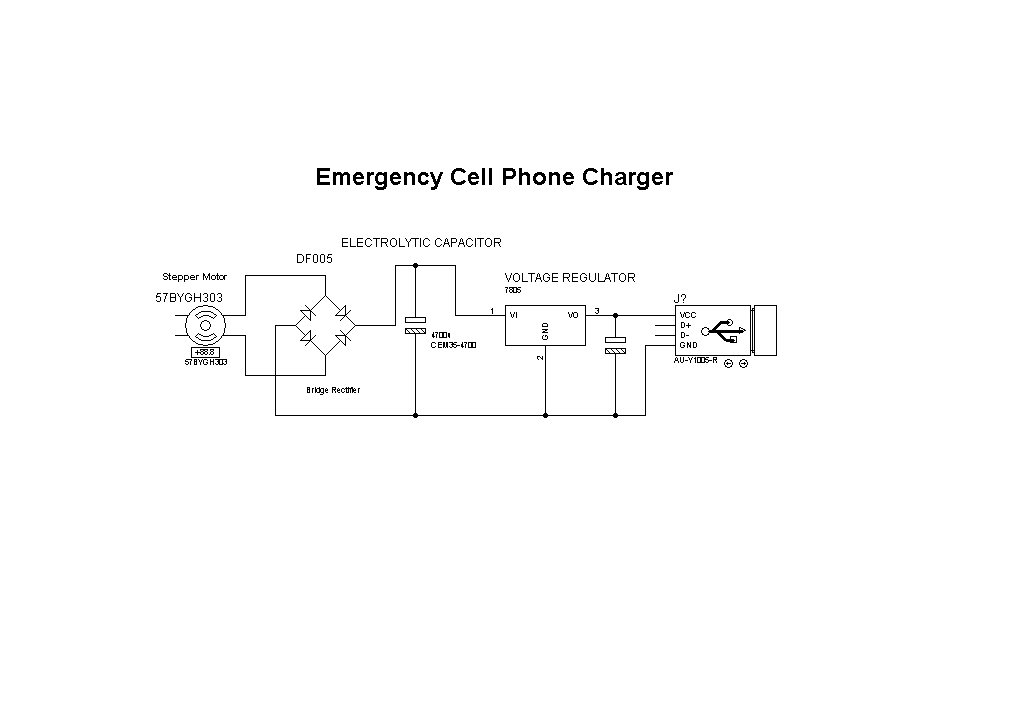 The unit was constructed on a perfboard and was tested to get a feel for how much effort would be required to charge the battery enough to make a short emergency phone call.
The unit was constructed on a perfboard and was tested to get a feel for how much effort would be required to charge the battery enough to make a short emergency phone call.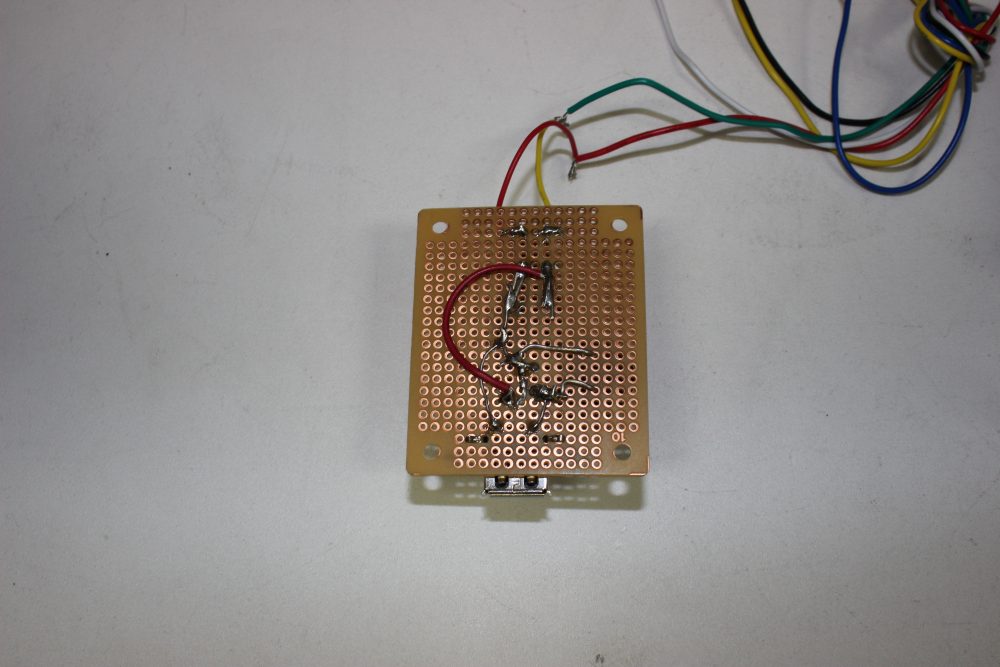
It was noted that several minutes of “crank” time was sufficient to allow a short phone call.
This article has proposed a simple battery charger circuit that could be used in an environment where no electrical power was available such as in a cabin in a remote location.
The generator proposed was found to be adequate to easily provide several minutes of “talk time” on a standard smart phone while only requiring a minimal amount of physical effort to generate the required electrical power.
